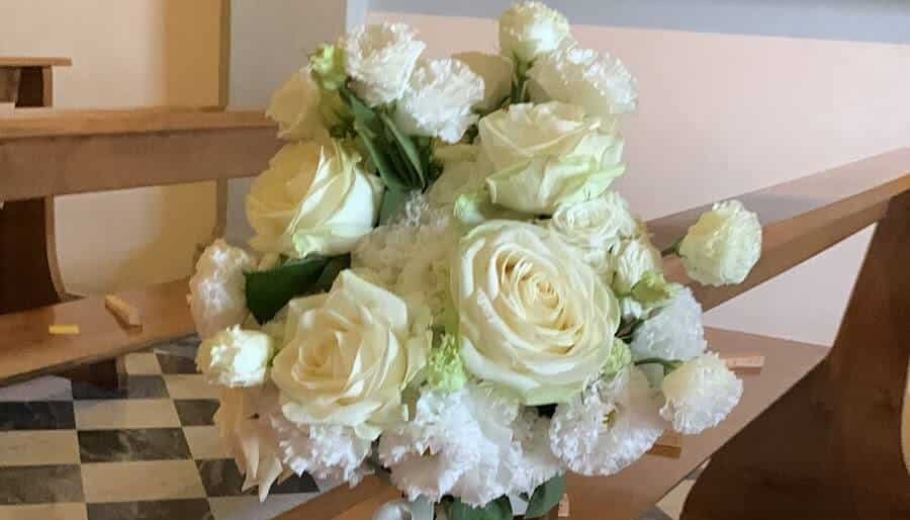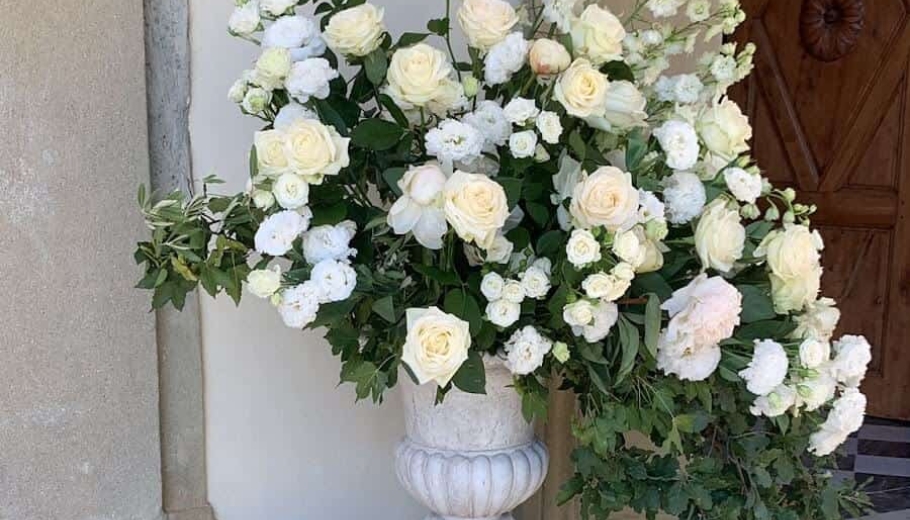Saying “I Do” – The Ultimate Guide for a Catholic Wedding In Italy
If you’re looking for a unique and unforgettable place for your wedding, Italy is it! It’s a place where even one visit is not enough because of its stunning natural scenery, delectable cuisine and wine, art, and fashion.
You will undoubtedly return for more of its velvety tiramisu, bubbly melting cheese on a fresh pizza, and smooth cold taste of gelato, but it’s not just about the food. Italy has the most breathtaking scenery you could ever imagine.
From cobblestone streets, historic cathedrals, scenic vineyards, beaches, finest Italian wedding villas and venues, it’s the best place to tie the knot. So when you want to create a “wedding experience” that’s unforgettable, you need an area that has it all – and Italy is it!
With a Catholic wedding in Italy, you’ll experience Venice’s perfect Instagram filter-like golden glow, the elegant style of Roman boutiques, sunlight splattered across olive trees, and its delicious foods.
These are just a handful of the numerous explanations for why Italy is the best wedding location. So, we’ve put together this helpful guide to help you plan your Catholic wedding in Italy.
Italian Catholic Wedding Traditions You Should Know
Italy is recognized as the country of love, from the seductive sound of water lapping against the walls of Venice’s medieval palazzi to the seductive aroma of citrus blossoms in Sicily. To keep things traditional, you should be familiar with the most common Catholic wedding traditions.
Long-standing practices abound in Catholic wedding traditions, but they go well beyond reciting a few verses from the Bible and having a priest officiating. Thankfully, a lot of Roman Catholic wedding customs are generally known. With the help of this guide, you’ll know what to anticipate while planning your Roman Catholic destination wedding. Here are just a few Catholic wedding traditions in Italy.
1. Wedding Date
Fridays are rarely used for weddings in Italy since it is said that on this day, evil spirits are formed, and being married on a Friday will only bring you bad luck. The best day to get married is Sunday since it is considered lucky and represents fertility and prosperity.
2. Good Luck
In many Italian weddings, the bride and the groom will take every precaution to ensure that the union is blessed with good fortune. The groom must have a tiny bit of iron in his pocket to ward off evil spirits. And to bring in luck, the bride will make a little rip in her veil.
3. First Look
We’re not talking about the first look where the couple sees each other before the ceremony…In some Italian areas, the bride is not permitted to look in the mirror before the wedding. Wow! Now that’s an interesting tradition. But luckily, she can take a peek if she takes off a glove or shoe first.
4. No White
You’ve probably heard the wedding tradition where no one can (or should) wear white to a wedding. This Catholic wedding tradition will probably last forever, so yes! Even if the bride isn’t wearing white, tradition states no guest should wear white to an Italian wedding.
Something you’ll be interested in: What To Wear To A Catholic Church Wedding: The Guide
5. The Bridal Bouquet
In Italy, the groom is expected to pay for the bride’s bouquet as his final gift to his sweetheart before she becomes his wife. The groom must pay for the floral arrangement and ensure that it is brought to the bride on the wedding day; she can choose the flowers and colors the groom must pay for it.
6. Catholic Marriage Certificate
The newlyweds receive a Catholic marriage certificate as proof that their union was “solemnized” (a ceremony occurred). That’s it! It’s just one document that is needed to complete the requirements for a “legal Catholic marriage.” But, for a private catholic wedding, only getting a Catholic marriage license is insufficient. In most locations, you must still obtain a formal marriage license from the town hall or registrar’s office before the wedding.
7. Catholic Marriage Requirements
A Catholic wedding ceremony differs significantly from a traditional wedding in many ways. Therefore, couples embarking on this magnificent, sacred journey must be aware of the traditions and rules of this type of religious ceremony.
Contrary to most other weddings, Catholic marriages may call for extensive pre-marriage counselling with a priest, the completion of specific paperwork, and even participation in specific church functions.
You may believe that the typical Catholic marriage preparations take a month or even a few months, but many churches have a long waiting time of up to several months! Here are some of the Catholic marriage requirements for your wedding in Italy.
8. Church Ceremony
Most of the time, a Catholic wedding must take place within a church. The couple must feel close to God throughout the ceremony because it is unique and sacred. Hence the ceremony shouldn’t be held somewhere else, like by the beach or in a vineyard.
If you dream of an outdoor venue for your wedding, we’re sorry, but for a Catholic wedding in Italy, you’ll have to skip that in favour of a blessed church wedding. Also, remember that Catholic wedding ceremonies do not have custom vows written by the couple; instead, the priest will recite traditional vows, and the couple repeats them.

9. The Interview
The first step toward walking down the aisle is often for the couple planning to get married to schedule an appointment with the priest before Pre-Cana (or pre-wedding). If you decide to get married in a Catholic church, many parts of your wedding may change, including your clothing, your bridal party, and the locations, so consult your parish priest as soon as possible.
10. Prenuptial Investigation
The canonical interview may be followed immediately or accompanied by a church investigation. According to the church, the goal of this study is to determine how prepared you and your spouse are for marriage. Divorce is still not encouraged!
Following the initial consultation, a couple will go through the Prenuptial Investigation, a one-on-one discussion with a priest conducted under oath. The investigation aims to determine how well they comprehend marriage’s four fundamental [tenets]: that you join into it voluntarily, that it is a lifetime commitment, that it is exclusive, and that it is open to children.
Required Documents For Church Weddings Abroad In Italy
Different churches may have other requirements for marriage. Many will need documentation of confirmation, communion, and baptism. You can ask the individual church where you received the sacraments for a copy because most churches keep records of attendance at these ceremonies. Don’t worry if that’s not achievable. Many priests will accept two witness affidavits for each sacrament.
Catholic Wedding Pre-Cana
When planning a beautiful catholic wedding in Italy, you must do the Pre-Cana. Couples will go through Pre-Cana, the church’s mandated program for marriage preparation, after completing their paperwork. The Pre-Cana program may have a variety of criteria, depending on the diocese, including many sessions with a priest, attendance at a required event like a conference or retreat, and more active participation in church activities.
The sessions with a priest make up the majority of Pre-Cana. In addition to providing guidance on what the church teaches about marriage, during these hour-long counseling sessions, couples will be questioned about existing and potential problems in their union, such as how to handle money, how to deal with potential in-laws, how to behave in public or any other issue that might be impeding faithfulness or fulfilling one’s role as a spouse.
Before continuing with the marriage preparation, the priest has the right to suggest a session with a psychologist to address specific difficulties if he discovers any “impediments” to marriage or carrying out the spousal function.
Getting Married In A Catholic Church
While getting married in a Catholic church in Italy may require a few extra steps, the experience and the memories will be worth it. But, if you feel like the process seems too much to handle on your own, hire a wedding planner. They will help keep you on track and on budget and make sure nothing that is required is missed. They are worth every penny spent, especially when you’re getting married abroad.
Useful reading chosen for you: How to Get Married in a Catholic Church in Italy

Catholic Destination Wedding Italy
A Catholic destination wedding in Italy is most likely the most unforgettable wedding you’ll ever experience. From the incredibly majestic natural scenery, culinary delights, rich culture, history, traditions, and of course, the memories you’ll create, it all sums up to be the best wedding ever.
And if you’re planning to have your wedding in Italy, be sure to hire a wedding planner to help you put all the pieces together.
There are thousands of fantastic wedding locations in Italy. So, whether you are getting married in a Catholic church, on the Amalfi Coast, in Venice, in Rome, in a church, at a vineyard, or on the beach, the memories you’ll create with your forever love and family will be cherished forever!
Up Next: The 8 Best Ways to Counteract Wedding Planning Stress


